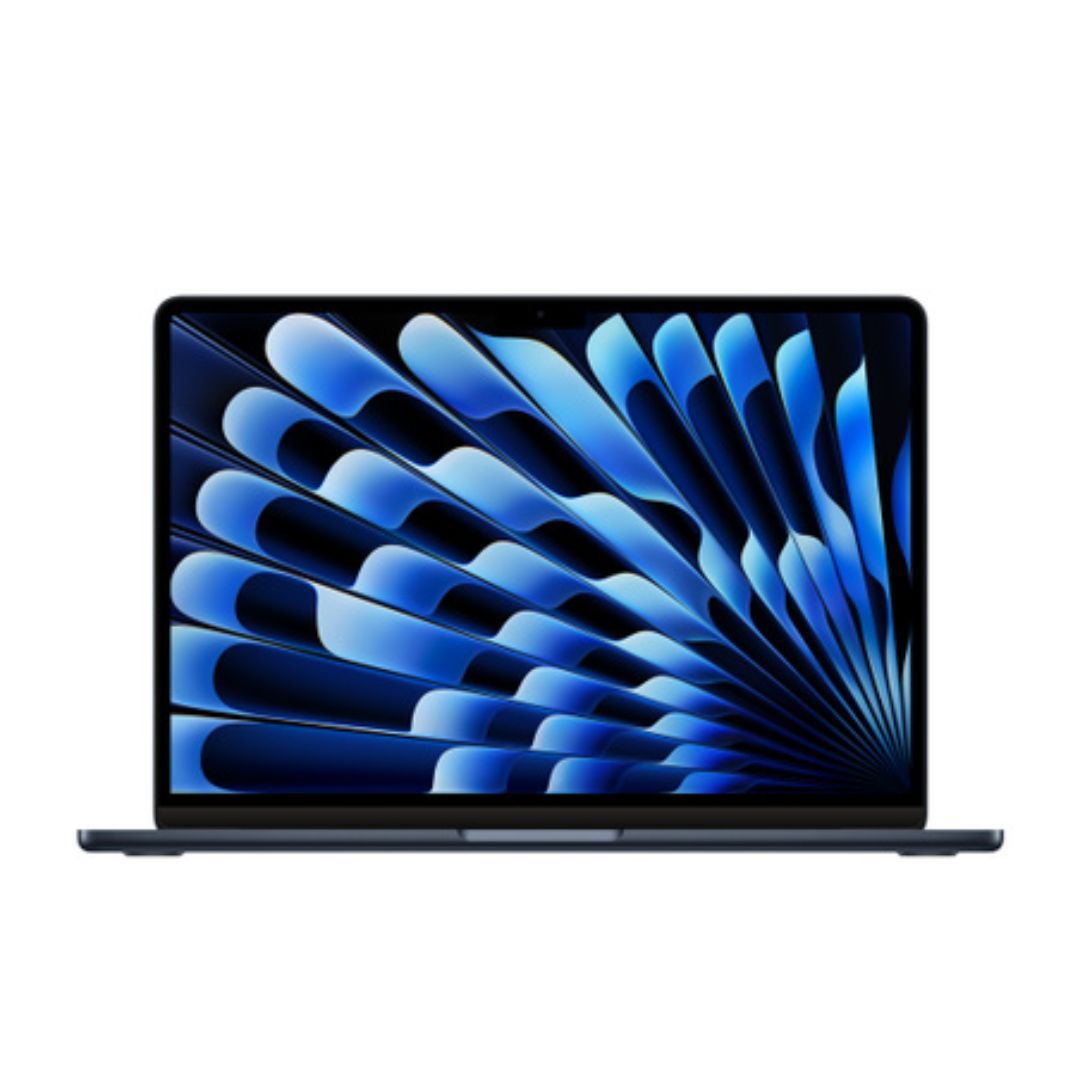MacBook Air M3 versus MacBook Air M1: Should you upgrade to the latest model?

The budget option
The MacBook Air with M1 is now coming up on it's fourth year, and the M1 chip at its core is starting to show its age. If you're after a cheap MacBook, however, then it's still a compelling option.
The MacBook Air is one of the most portable PCs around, and it brings some wicked features to the table for those looking for a powerful laptop that’s easy to slip into a backpack. The new M3 MacBook Air comes with Apple’s latest home-grown silicon, the M3 processor, and the same stunning design as the previous MacBook Air with M2 chip.
If you’ve got one of the slightly older MacBook Air M1 machines then the new M3 model could look like a very powerful upgrade choice. There’s a massive performance boost (as we’ll soon find out) and you’ll get that lovely new design — but we hope you won’t miss the wedge-shaped option, as these squared-off models are all you’re going to get now!
But just how do the two machines compare? Is it worth trading in your old one and buying one of the latest MacBook Air models? Let’s take a deep dive to find out.
MacBook Air M1 vs MacBook Air M3: Price
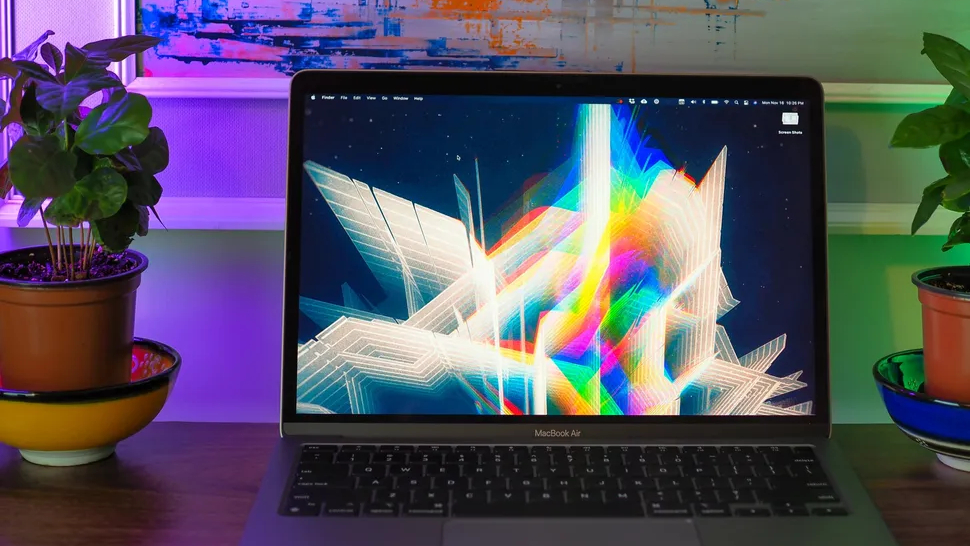
This is an important one, and worth looking at first. The MacBook Air with M1, when it was new, cost you $999. The MacBook Air M3 13-inch, however, will start at $1,099, a $100 price bump over the MacBook Air M1. Of course, if you were looking to replace your aging M1 Air like-for-like, then you could save some money and find a new one somewhere like Amazon for anywhere from $799 to $899.
For the price that you’ll pay today, a $799 MacBook Air M1 is still a solid machine, with 8GB of RAM, an M1 processor, and a lovely slim MacBook Air design. Bear in mind that it will be supported by Apple for a shorter period of time, however, as the M1 chip falls behind and won’t be able to keep up with macOS future features.
Keep in mind as well that you have more configuration options with the MacBook Air M3 as well. The MacBook Air M3 has a 15-inch model for starters, so you can get a bigger screen for $1,199. That’s an option that the MacBook Air M1 never had. You’ll also pay slightly more for internal upgrades with the M3 Air devices, although now that the M1 model has disappeared from the Apple Store and been discontinued by the company, you won’t be able to customize one yourself anyway unless you head to a store like Best Buy or B&H Photo.

Whichever way you look at it, the MacBook Air M1 may well be cheaper, but it’s likely not to last as long if you’re looking to keep up to date with the latest advancements to the macOS ecosystem. If you want the cheapest MacBook you can lay your hands on without going for something that’s used, then M1 is your ticket. If you want a laptop that will last you longer, it will cost more, but the M3 is the best for you price-wise regardless.
iMore offers spot-on advice and guidance from our team of experts, with decades of Apple device experience to lean on. Learn more with iMore!
MacBook Air M1 vs MacBook Air M3: Screen
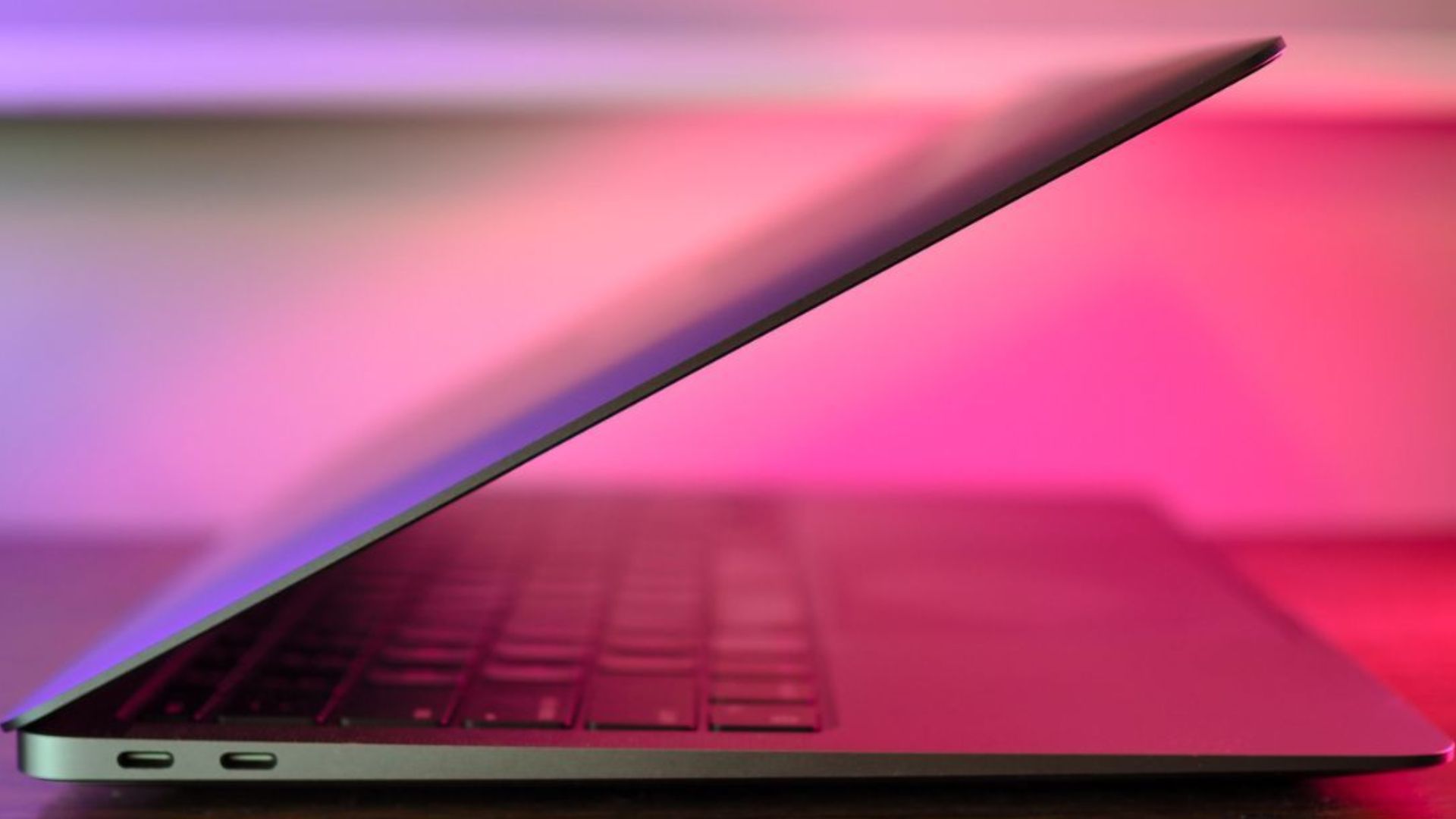
The MacBook Air M1 is only available in one size — 13-inch. That has a 13.3-inch Retina display, which looks good enough. Stack it up next to the newest MacBook Air models, however, and your eye will be instantly drawn to the newer model.
The MacBook Air M3 laptops have the same displays as their predecessors — a 13 and 15-inch Liquid Retina display with resolutions of 2560x1664 and 2880x1864 respectively. Now, that’s not that much higher than the older model, but it’s that Liquid Retina moniker that does all the talking.
They’re bright, crisp, and stunning to look at. They don’t have the slick 120Hz refresh rate of the ProMotion MacBook Pro displays, but the 60Hz is plenty for most applications. If you’re a video editor or photo editor, the extra sharpness and color you get with the Liquid Retina display is well worth the extra cost.
There is something else you’ll notice when you open up the M3 MacBook Air — the divisive camera notch at the top of the screen. While it might seem off-putting, it quickly blends into the control bar at the top of the screen, and it allows for more useable space below, and a slimmer display bezel.
MacBook Air M1 vs MacBook Air M3: Processor
The primary difference between the new MacBook and the older models is the M3 at the core of the machine. Last seen in the redesigned base model M3 MacBook Pro, the M3 chip is a very potent processor that brings plenty of performance to the table.
| Row 0 - Cell 0 | Row 0 - Cell 1 | Row 0 - Cell 2 |
| CPU | 8-core | 8-core |
| Performance cores | 4 | 4 |
| GPU | 10 | 7 |
There’s an 8-core CPU with 4 performance cores and 4 efficiency cores, alongside a 10-core GPU. That adds to a 100GB/s memory bandwidth for some very speedy RAM.
The M1 on the other hand has an 8-core CPU with 4 performance cores and 4 efficiency cores, to go with its 7-core GPU. It’s that GPU where the numbers of the M1 drop on first glance — although there’s more to the story.
The M3 is built on the 3nm process, meaning that Apple has been able to make a more powerful and efficient chip than the M1, squeezing more transistors into the same space than is possible with the M1's 5nm process. The performance figures look to speak for themselves. Apple says that the M3 will run game titles like No Man’s Sky up to 60% faster than the M1, for one, giving a massive boost to game performance.
There’s more performance to be had when using AI features, too. Apple gives the example of editing an image using Photomator’s Super Resolution tool — it’s going to be up to 40% faster than M1, and up to 15x faster than an older intel-powered Mac. That’s a massive bonus for creatives, and caters to more strenuous workloads.
Final Cut Pro will show off more of the power of the M3 processor as well, bringing 35% faster speeds than the M1 chip. It’s when compared against an Intel Mac that users will again see the biggest boost, with performance up to 13% faster.
MacBook Air M1 vs MacBook Air M3: Design

The MacBook Air line received a visual update in 2022, bringing a snazzy new aluminum chassis to the table that does away with the wedge shape of the M1 generation. That chassis remains in use for the M3 MacBook Air models, available in 15-inch and 13-inch sizes. It looks lovely — although some do miss the tapering and (at points) slimmer MacBook Air M1.
Remarkably, despite its slightly larger screen, the comparable 13-inch MacBook Air M3 only adds a little extra depth to the device — 8.46 inches as opposed to the 8.36 inches of the older device. It’s lighter too, although only .1 of a pound. Overall, you won’t notice too much of a difference when slipping either the MacBook Air M1 or M3 into a bag, although the more uniform thickness (or slimness) of the M3 model makes for a more modern-feeling product.
The keyboard on the MacBook Air M3 is different too, borrowing its board from the previous M2 model. It’s a lovely clicky affair, and makes typing super comfortable. There’s also TouchID on both so that you can log in without the need to input your password every time you log in — though you’ll want the M3 model if you want a dedicated row of function keys along the top.
MacBook Air M1 vs MacBook Air M3: RAM
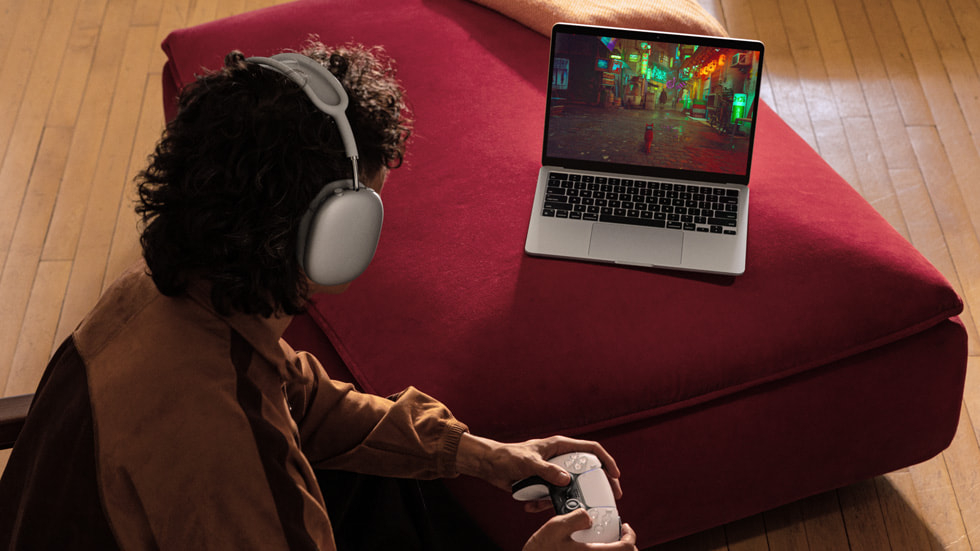
The MacBook Air M1 is available with two RAM configurations — 8GB and 16GB. The 8GB option should be fine for most, but if you find yourself needing more multitasking headroom, then the 16GB option is going to be much better. It will cost you an extra $200, however, and you can’t buy it from Apple anymore. Instead, you’ll have to look somewhere like Best Buy or B&H Photo.
The RAM options on the M3 are larger. The base model still has 8GB, although you can now spec up 16GB or 24GB for some extra multitasking power, so that you can do more with your MacBook. That RAM will be quicker as well, as the M3 chip has more memory bandwidth.
Remember that for both machines the RAM is shared by the GPU and the CPU, so you’ll want to get as much as possible if you’re looking to do any graphics work. It’s also non-upgradeable, so you should future-proof the purchase with as much as you may need for the lifespan of the Mac so that you don’t find yourself wishing for more later on down the line. Either way, the MacBook Air M3, even in its base 8GB model form, is going to be better for multitasking thanks to its faster memory.
MacBook Air M1 vs MacBook Air M3: Storage
The MacBook Air M3 and the MacBook Air M1 have the same storage options. You can get an SSD that’s either 256GB, 512GB, 1TB, or 2TB inside your new laptop. Just like the RAM, you can’t upgrade the internal storage later on down the road so you’ll want to make sure you get it right the first time you order your MacBook. Note that M2 MacBook Air models had single-channel SSD read and write speeds in that entry-level storage configuration, which created data transfer bottlenecks. It’s not yet clear if that’s an issue to be shared in the M3 line.
MacBook Air M1 vs MacBook Air M3: Battery life
The MacBook Air M3 has, just like the M2 model, a battery life of up to 18 hours. That’s a very long-lasting battery, and will allow you to take your work on the go where you might not have access to a power outlet. That battery life will drop depending on your workload, so don’t expect to get the same battery life as a writer if you’re a video editor.
Similarly, the battery in the MacBook Air M1 will get you 18 hours — so you get the same battery life in the newer model despite the performance boost the M3 will bring to your applications.
MacBook Air M1 vs MacBook Air M3: Extra features
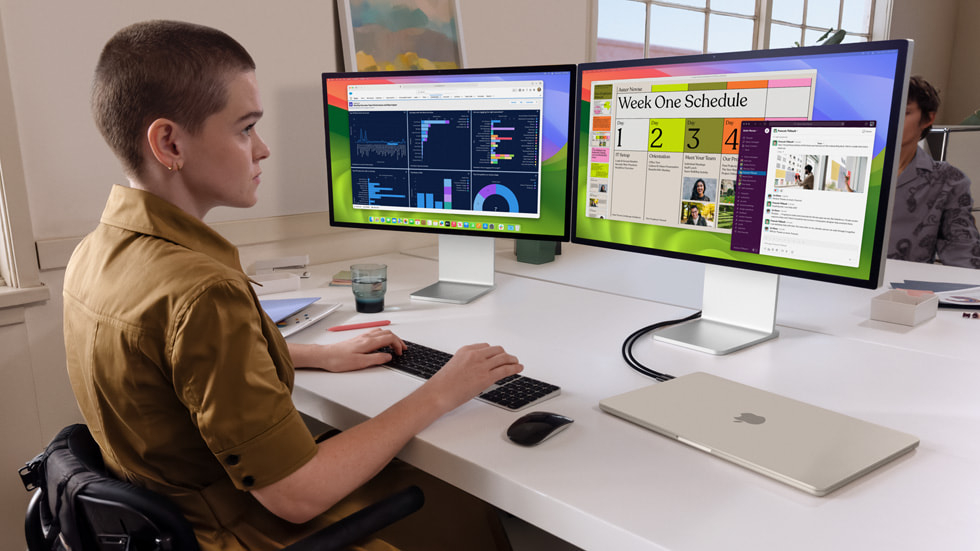
There are a couple of things that you want to make sure your laptop has. A webcam, plenty of ports, and a decent trackpad are some of the most important, arguably, and both models have some excellent additions.
First of all, is the FaceTime camera that sits on the top part of the screen. The camera on the M1 MacBook Air is, alas, not very good. It’s a 720p camera that struggles in low light, although the MacBook does its best to improve the image with some clever computational improvements. The M3 model on the other hand comes with a much nicer 1080p webcam, nestled in the notch at the top of the screen. It’s a much nicer webcam, and the extra resolution makes for a better image at the end. There are the same computational improvements as well, although the base picture it has to work from is much better.
The MacBook Air M1 and M3 have the same ports — a pair of USB-C ports. The MacBook Air M3, however, has more usable ports because of the addition of a MagSafe charging connector. The M1 model requires one of the ports to be used for charging, only leaving you with one port that you can actually use to plug in peripherals if you’re looking to charge it from a wall outlet at the same time. The MagSafe connector not only frees up a port, but it also makes for a better user experience, as you don’t have to worry about the laptop careening off a desk if you accidentally step on the charging cable. Instead, the cable just pops right out, not taking the laptop with it.

The trackpads on the two laptops are similar, both featuring accurate Force Touch panels. That means multi-touch gestures, different levels of clicking response, and pressure sensitivity. No matter the MacBook you buy, the large trackpads are some of the best around.
Audio support is good on both, although you’ll find the MacBook Air M3 superior to the older model. While both feature a 3.5mm headphone jack, for example, you’ll get support for high-impedance headphones with the MacBook Air M3. That means the laptop will drive some of those snazzy audiophile headphones, or better reference models for music production.
The speaker setup is better on the MacBook Air M3 as well, with a four-speaker setup. Whereas the M1 model only offers stereo audio, the M3 supports Spatial Audio through its built-in audio system. The speakers in the M1 are known for being excellent, but the M3s are the same as the M2 MacBook Air’s — and they’re even better. You can also connect up your AirPods Pro and AirPods Max for head-tracked Spatial Audio, something that’s not supported on the MacBook Air M1.
MacBook Air M1 vs MacBook Air M3: macOS
Both the M1 and M3 MacBook Air support the latest version of macOS, otherwise known as 14, Sonoma. Both are likely to be supported by Apple for some time, although the M1 will cease getting support sooner than the M3 model. If you want to know more about macOS Sonoma, then check out our macOS coverage.
If you want the ‘future-proofed’ MacBook Air, then the M3 is the way to go. Sporting more powerful internals, Apple will be able to provide it with new, more demanding software features for longer than the aging M1 model.
MacBook Air M1 vs MacBook Air M3: Should you upgrade?
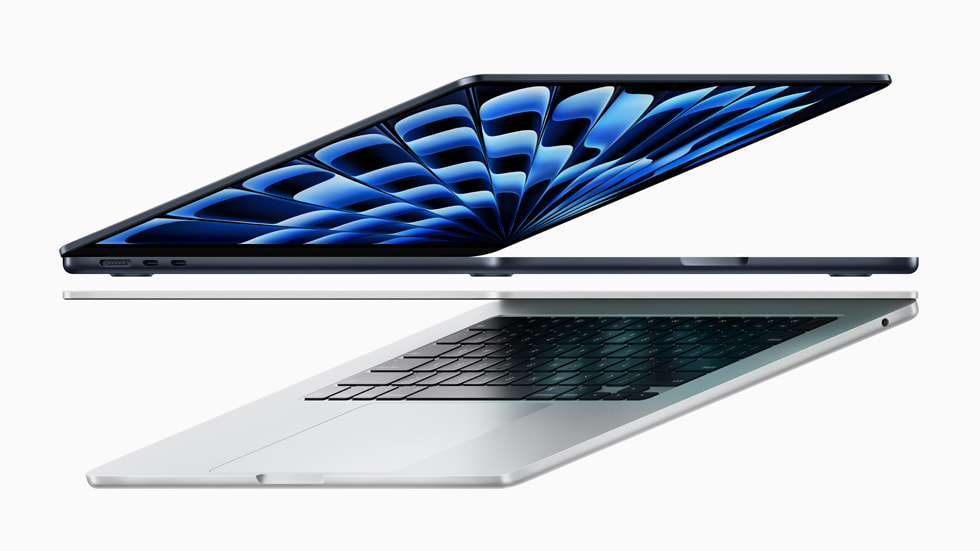
If you’ve just bought a MacBook Air M1, then no, you shouldn’t. While the improvements are many, you likely saved lots of money by buying the M1 model, so you shouldn’t feel like you made a purchasing mistake. It remains a great machine.
If, however, you’ve had your MacBook Air M1 for some time and you want something new, then the MacBook Air M3 is certainly something you should consider. It’s a stunner of a machine, and you’ll get much better performance if you upgrade. If you want more performance but don’t want to pay the $1,099 for the M3 model, then you should also take a look at the now reduced M2 13-inch model, which you can buy from Apple for $999.
The MacBook Air M3 is a superb upgrade to the MacBook Air line — although whichever MacBook you end up with, you’ve got one of the best portable machines around. The MacBook Air M3 is available to preorder now, and releases on March 8, 2024.

As iMore's Senior Staff writer, Tammy uses her background in audio and Masters in screenwriting to pen engaging product reviews and informative buying guides. The resident audiophile (or audio weirdo), she's got an eye for detail and a love of top-quality sound. Apple is her bread and butter, with attention on HomeKit and Apple iPhone and Mac hardware. You won't find her far away from a keyboard even outside of working at iMore – in her spare time, she spends her free time writing feature-length and TV screenplays. Also known to enjoy driving digital cars around virtual circuits, to varying degrees of success. Just don't ask her about AirPods Max - you probably won't like her answer.
